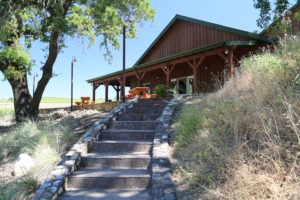

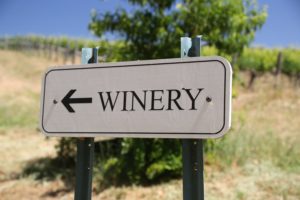 Hendry Ranch Winery has been owned by the Hendry family since 1939; any Napa Valley vineyard ownership of this length of time is quite historical, but for perspective, there has been a vineyard on site since at least 1859 – originally planted by winemakers and brothers Frederick and John Sigrist. Under their ownership Sigrist Winery was built; this is one of Napa Valley’s early commercial vineyards (considering George Yount planted the first ever vineyards in Napa Valley in the winter of 1838/1839). And like other Mt. Veeder or properties in the vicinity, this site was also heavily influenced by early German pioneers and winemakers.
Hendry Ranch Winery has been owned by the Hendry family since 1939; any Napa Valley vineyard ownership of this length of time is quite historical, but for perspective, there has been a vineyard on site since at least 1859 – originally planted by winemakers and brothers Frederick and John Sigrist. Under their ownership Sigrist Winery was built; this is one of Napa Valley’s early commercial vineyards (considering George Yount planted the first ever vineyards in Napa Valley in the winter of 1838/1839). And like other Mt. Veeder or properties in the vicinity, this site was also heavily influenced by early German pioneers and winemakers.
On November 2, 1874, a meeting in New York City was held to create an association to protect the viticultural interests of the country. It was agreed to call the newly formed organization the American Wine Growers and Dealers Assocation. The Sigrist brothers were in attendance; Frederick Sigrist was elected as First Vice President. And John Sigrist was elected one of the honorary vice presidents among others, including Charles Krug.
By 1878, according to the May 5, 1879, issue of the Napa Register, this property was owned by fellow German, George Barth. He called it his ‘wein garten’. John Buhman was also an owner of the property but was not mentioned in this particular article. The Buhman family heirs still reside in the valley: reference our notes on Buhman Estate Vineyards. And the article mentions that also in Barth’s possession were vintages 1871 through 1878. The wines from this property made it across the country; in 1880 an article mentions 2500 gallons were shipped to New York.
From old newspaper records, Barth sounds like a bit of a character. In addition to the Sigrist Ranch, he owned a number of pieces of property, a saloon and hotel (where he maintained a brick vault serving the Germans in town) and had almost completed a new brewery building when it burnt to the ground in 1881. In debt and being pursued by creditors, he soon left his family, emptied his safe and skipped town for several years to return to his native Germany. During his absence his wife declared bankruptcy and the various properties he left behind were sold – although Barth eventually returned after several years and made attempts to reclaim his old properties.
An article dated November 24, 1879, from the Napa Register mentions the property at that time still had ruins of an ancient adobe house and an older wine cellar built by Sigrist, presumably sometime in the early to mid 1870s had been replaced by Barth with a recently constructed new one with stone quarried from the nearby foothills of the Mayacamas mountains. The article also mentions a distillery was built and a weathervane that used to be mounted on the Napa city courthouse had been moved to its new location on an office on the property. In 1879 over 150,000 gallons of wine had been shipped from the property with another 100,000 gallons still remaining.
By the late 1880s and into the 1890s phylloxera destroyed the vines that were growing on the ranch (not the first-time phylloxera would become a serious problem in Napa Valley – 100+ years later in the 1980s and into the 1990s phylloxera would again destroy a significant portion of the valley’s grapevines.
Fast forward decades: George W. Hendry was an agronomy professor and taught at both the University of California Berkeley and at Davis. He was a man of many talents and interests including agriculture, photography, travel and history. He traveled the world in the 1920s studying and then documenting numerous agricultural practices. Later he studied the diversity of plant materials embedded in adobe bricks including from the Rancho Petaluma Adobe near Petaluma dating from 1836. He documented specific varieties of plants within the bricks and documenting early varieties of wheat and wheat pests in California. An old map highlighting the adobes of the San Francisco Bay region hangs in the Hendry Winery tasting room. It is a fascinating look into some California’s early history.
Remarkably two original adobe buildings are still standing in Napa County; the Chiles Adobe in Chiles Valley is a private residence on what is known as the Dollar Ranch and was built in the 1840s. R. Stanley Dollar Jr. purchased what previously was the E.H. Krause Ranch in 1964. The ranch is still owned by the Dollar family; Dollar Shipping was founded in San Francisco and became a part of American President Lines in 1938. The other still standing adobe is the Cayetano Juárez Adobe built in 1845 in the city of Napa. It currently houses Le Chevre Restaurant.
Tragically two other old adobe structures built prior to the 1850s burned down in the city of Napa in the 1900s. One known as the “Happy Casa” built by Don Salvador Vallejo (brother of Mariano Vallejo) used to stand near what is now the Chevron on Trancas Avenue and was the headquarters for his Rancho Napa. This burned down in 1919. The other was built by Mariano for his brother Salvador and stood on what is now the site of Beaucanon Estate Winery; it burned down in 1970.
Hendry also developed new types of crops including the drought resistant California Mariout barley (which had higher yields as compared to other strains) and Double Dwarf Marlo variety (resistant to root rot).
And in 1926 it was announced in the December issue of the California Historical Society Quarterly that George W had located an old cross boundary marker placed in 1773 from an order by the King of Spain at that time to mark the boundary between upper and lower California or in reality, marking the boundaries between Franciscan and Dominican areas of mission control. This cross was placed by the Franciscan monk Francisco Palao who was also the founder of Mission Dolores in San Francisco. Until George’s find, this physical boundary marker had been lost to the ticking clock of time. The present-day border of Mexico / USA is next to Tijuana – about 30 miles north of this original boundary marker.
George W and his wife Margaret purchased the old Sigrist property in 1939 – at that time a 6-acre section of the property was still planted to Zinfandel vines dating back to 1900. Margaret was a graduate of U.C. Berkely in 1927. Unfortunately, George died in 1944 unexpectedly of a heart attack leaving Margaret (died 1991) to raise their two sons, George and Andrew and simultaneously continue to oversee the ranch (grapes were being sold to the Christian Brothers Winery). George went on to earn his undergraduate and master’s degree from U.C. Berkeley and eventually become one of the world’s leading designers of cyclotrons (often used in hospitals to treat cancer). Despite his time commitments in designing and working with cyclotrons, George has also been very involved with the ranch all his life and made the early decision to pull out the remaining fruit trees and began planting grapes. The first vintage of Hendry Family wines was from 1992.
Tours + Tastings
George’s seminar, or should we say, seminal tour and tasting was among the longest and most informative of any Napa Valley winery tour we’ve taken; this is one of the wineries in Napa Valley where we take friends and family. We have been here a number of times; guests who took tours with George, would need to allow at least 2.5 to 3.5 hours (our record time so far with a George led tour was slightly over 3.5 hours). His lengthy tours are what we call “appointment breakers” so guests who had an appointment following their tour at Hendry had to be sure it was scheduled far enough out. Several tours were given per day but the tour that was always the highest in demand was with George.
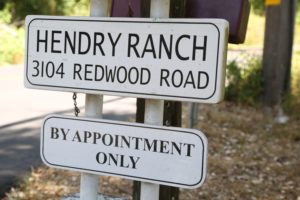
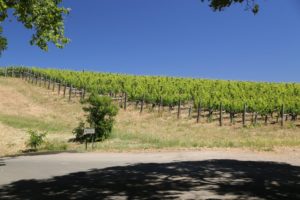
 George is in his mid 80s now and has a lifetime of experience including plenty of trial and error in the wine industry. The focus of his tours was educational, and questions were encouraged. You can tell a true farmer by looking at their hands. If they are spotless, they are not a farmer – often before tours would begin, George would have been working in the vineyards and one could easily notice his dirty hands and scuffed up jeans.
George is in his mid 80s now and has a lifetime of experience including plenty of trial and error in the wine industry. The focus of his tours was educational, and questions were encouraged. You can tell a true farmer by looking at their hands. If they are spotless, they are not a farmer – often before tours would begin, George would have been working in the vineyards and one could easily notice his dirty hands and scuffed up jeans.
Tours were typically limited to no more than 8 people. Much of George’s tour took place in the actual vineyards and included plenty of viticulture information not disclosed on other wine tours. These experiences refreshingly allowed guests to see the “other side of Napa” from a farming perspective.
NOTE: Hendry no longer offers tours of their winery or vineyards. Several different tastings are offered including the Hendry Classic Tasting showcasing the diversity of their wines; visitors will typically try 10-12 different wines at a sit down tasting in front of their enclosed cellar in a hospitality room or outdoors under the shade of both old oak trees and shade umbrellas. Other tastings including the White Wine Flight and the Red Wine Flight. Note the unique place mats often used for their tastings; these depict a map outlining of all their vineyard blocks. Unlike all tastings we’ve been to in Napa where someone pours the wine, George would often pass the bottle around the table and visitors will pour their own small portions.
—
Vineyards
Hendry Vineyard is located just north of the Carneros district; their property has several different soil types and microclimates. As a result, all parts of their vineyards are block designated based on these characteristics. This allows Hendry to really micromanage their wines and produce the type of wine best suited to the block’s specific characteristics. There are 203 acres on site, of which 117 are planted. The vineyards are then organized into 49 unique blocks, each of which is managed and controlled separately both in the vineyard and in the winery.
Water is an issue in this slice of the valley and Hendry tends to dry farm their vineyards after the vines have been well established, usually after 5 or 6 years. His vineyards are extremely diverse ranging from cooler moister regions near a local creek up to higher drier bench land. George has been keeping rainfall records on the property over the past 50 years and on average has interestingly noticed that his vineyard receives several more inches of rain today than when he first started keeping track (perhaps a bit surprising considering California’s proclivity for always being in a perpetual drought).
Over the years grapes from the Hendry Ranch have been purchased by a number of prominent wineries including Robert Mondavi (also for use in Opus One), Kent Rosenblum, Peter Franus and Genevieve Janssens for her Portfolio wines and others.
George’s nephew Mike Hendry has overseen the management of the vineyards since 2001. He also produces very limited production wines under his Mike & Molly Hendry label and fortunately has a strong appreciation for both the history of this property as well as winemaking in Napa Valley.
Wines + Winemaking
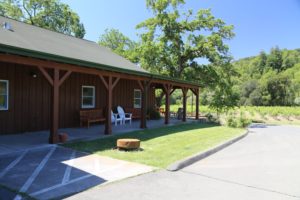
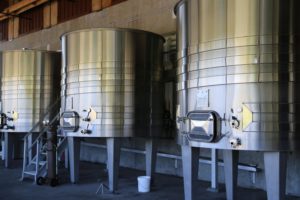
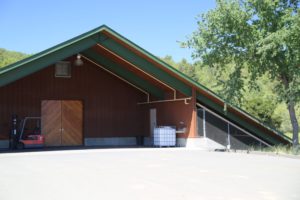 Their 22,000 square foot gravity flow winery is state of the art. An intriguing part of the winery design involves the second floor. The second-floor wraps around openings of the tops of the steel tanks. The tanks are built right into the design of the winery – eliminating the need to climb ladders to get to the top of the tanks or needing catwalks. Hendry also owns their own bottling line which makes it very convenient for bottling both their own wines as well as their several custom crush clients.
Their 22,000 square foot gravity flow winery is state of the art. An intriguing part of the winery design involves the second floor. The second-floor wraps around openings of the tops of the steel tanks. The tanks are built right into the design of the winery – eliminating the need to climb ladders to get to the top of the tanks or needing catwalks. Hendry also owns their own bottling line which makes it very convenient for bottling both their own wines as well as their several custom crush clients.
Borrowing from wine terminology George holds three “blocks” close to the vest when making wine: keep the alcohol under control, produce dry wines – not sweet, and do not allow oak to take control of the flavors. George is also passionate about how wine should pair with food and will make pairing suggestions for every one of the wines poured. If your tour is closer to lunch time you may find yourself becoming quite hungry just listening to his or any of their other hosts’ pairing advice; George would invariably always recommend the nearby La Taquiza restaurant for its fish tacos and other assorted Mexican dishes. After a long run, La Taquiza temporarily in 2023 but in 2024 it reopened under new ownership.
George has conducted tests on his older Chardonnay’s that were bottled with corks. He noticed varying degrees of oxidation between each of the wines and also how the flavors were affected. These wines in other words did not age consistently. He also conducted blind tasting tests on some of his wine club members between screw capped wines and wines that were bottled with corks (same wine, same vintages). Finding that most people chose the screw capped versions and based on his studies of older Chardonnays, he now bottles his lighter white wines, the Chardonnays and some of his lighter reds with screw caps. He has noticed how screw caps keep the wine fresher, preserve the “fruitiness and extend the shelf life.
An interesting side by side comparison is the Hendry un-oaked Chardonnay and the barrel fermented Chardonnay. It’s fairly easy to notice the color differences between the two wines and the aromas and flavors are markedly different. The unoaked Chardonnay is a true varietal expression of this grape whereas the oaked version brings a more rounded mouth feel and additional flavors imparted from the oak including a nuttiness, notes of almond and zesty spicy notes.
The 2019 Hendry Ranch Winery Unoaked Chardonnay did not go through any malolactic fermentation. This wine is medium to deep gold in color; the bouquet initially offers aromas that reminded us of rolling a warm piece of corn just pulled out of boiling water and rolling it across the top of a cube of butter. Hold that aromatic thought for a minute because this bouquet shows plenty more depth including an alluring union of both tropical fruits and baking spices. We noted: mango, papaya, honeysuckle, citrus blossom, caramel, vanilla and sweet honeycomb. The palate offers a satiny texture with flavors of ripe yellow peach, Golden delicious apple, pear, mango and nectarine along with a final burst of cleansing acidity.
The 2019 Hendry Ranch Winery Barrel Fermented Chardonnay was aged for 11 months in approximately 33% new French oak. The wine was not racked but was frequently stirred on its lees. This wine did not undergo any malolactic fermentation. It is deep gold in color; the influence of oak has imparted a deeper but perhaps more linear aromatic core to the bouquet, showing warm and woody scents. It offers notes of honeycomb, crème Brule, warm butter, brown sugar and toasted marshmallows (brought back memories of camping up at Lake Tahoe on summer evenings sitting around a fire with marshmallows hanging on the end of sticks). The palate offers a noticeable textural viscosity which is almost saline in its feel. It offers flavors of ripe melon, yellow nectarine and peach and lingers with some toasted oak spice notes. Medium acidity.
The 2021 Hendry Ranch Winery Rosé Wine is a blend of 22% Primitivo and 78% Zinfandel. There are several methods to make a rosé wine; this bottling was produced by saignée, a process of bleeding off juice during early fermentation resulting in a more concentrated red wine but also producing a lighter colored wine, due to less skin contact. This wine is deep pink in color; the bouquet offers more aromas than we usually find in wines of this style including of cranberry, pomegranate, red cherry, raspberry, wild strawberry and a cut grass nuance. The texture is supple and slightly creamy across the palate; it has more textural weight than the average rosé. This bottling offers flavors of watermelon jolly rancher candy and raspberry. Upon tasting this, we immediately thought of pairing it with a spicy Thai style prawn salad.
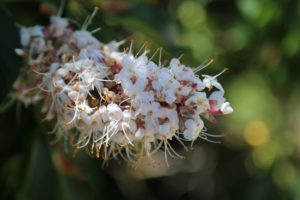

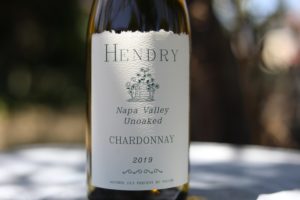 George grows Albariño, a Spanish variety very uncommon to Napa Valley (only several producers make wine from this variety in the area). This is a variety that grows in the cooler coastal regions of southwest Spain and the cooler southern part of Napa makes an ideal area to grow this grape. This is a lighter styled wine that is fairly high in acid. The palate typically shows notes citrus blossom and pomelo; this wine will pair well with a variety of seafood’s especially shellfish. George also uses this wine to make salad dressing (ingredients: Albariño wine, olive oil and a touch of lemon).
George grows Albariño, a Spanish variety very uncommon to Napa Valley (only several producers make wine from this variety in the area). This is a variety that grows in the cooler coastal regions of southwest Spain and the cooler southern part of Napa makes an ideal area to grow this grape. This is a lighter styled wine that is fairly high in acid. The palate typically shows notes citrus blossom and pomelo; this wine will pair well with a variety of seafood’s especially shellfish. George also uses this wine to make salad dressing (ingredients: Albariño wine, olive oil and a touch of lemon).
We do not normally drink a lot of Pinot Noir, but George’s Pinot Noir is quite appealing. With this variety he subscribes to the “less is more” theory in that this wine shows less intensity but rather displays a broader range of flavor or as he says, “I strive to make a Pinot Noir that is complex rather than macho”! This wine was fermented using indigenous yeast. The 2006 Hendry Ranch Winery Pinot Noir offers an elegant nose with notes of slightly baked cherry and baking spices. This is a very well-balanced wine with a long finish.
The 2019 Hendry Ranch Winery Cabernet Franc, Blocks 9D & 26 (the only blocks of this variety growing on the ranch) is 100% varietal. This wine is dark ruby with purple tinges on the rim in the glass; this is a riper showing of this variety with aromatics of dark plums, dark cherry and ripe blackberry and an underlying always present note of old cedar wood. The bouquet also offers aromas of dried herbs, a hint of black pepper and dark chocolate. But the fruit is most present and forward compared to its other aromas. In the mouth, this wine is fleshy but without any sort of heavy tannin presence. It offers flavors of dark plums and blackberry framed by supple well-integrated tannins on the darker fruit filled finish. This bottling was aged for 15 months in 40% new French oak barrels.
The 2018 Hendry Ranch Winery Primitivo is dark ruby in color with purple highlights on the edge of the rim in the glass; this wine is dominated by ripe aromas of darker plums, a brambly/blackberry influence and violets along with some Asian five-star spices and crushed peppercorn. The palate offers flavors of blackberry, boysenberry and mulberry. It is rich showing but with rounded finely woven tannins which are well-integrated into the finish. This wine finishes with very bright acidity combined with red and darker berry flavors. There are not many wines bottled as Primitivo from Napa Valley although the variety is also known as Zinfandel (in Puglia, Italy it is referred to as Primitivo). Incidentally the origins of this variety are Croatia where it was known was Tribidrag; its lineage was discovered and traced by Dr. Carole Meredith, former UC Davis professor who for many years with her husband Steve produced wines from their own vineyard on Mt. Veeder.
While there are not a lot of 100% Napa Valley grown Petit Verdot, we come across at least several bottlings each year. The 2018 Hendry Ranch Winery Petit Verdot (100% varietal) is dark ruby/purple and opaque in the glass; the dark fruit is forward and center showing dark plum, blackberry (reminds us of picking ripe blackberries in a thicket above a dry creek bed somewhere in northern California on a hot summer’s day), boysenberry and violets. There is a also a savory character including smoked meats and sage. This wine has loads of aromatic depth and power. The palate is opulent and is brimming with dark fruit flavors. The tannins are well-structured with a gravelly-like texture; the finish lingers with notes of crushed peppercorn. We immediately thought of pairing this wine with smoked tri-tip, perhaps at Buster’s BBQ in Calistoga.
A number of the wines are labeled with a specific block number and include fruit from just that particular block. With 11 varieties planted on site Hendry makes a diversity of wines. Other standouts include several Zinfandels bottled based on vineyard block location and clones with their respective source block names, a Bordeaux blend and their “biggest wine”, the Cabernet Sauvignon. All their wines are *extremely* reasonably priced for Napa Valley standards.
Hendry’s wines have generally received positive press but as George says, “the critics can’t taste the wines for you” and he encourages you to try them yourself as everyone’s palate is different.
Those interested in tasting the Hendry Ranch wines must make an appointment for a visit to the winery. It is very common for people to show up without appointments (especially on the weekends) and they are generally unable to accommodate these unannounced visits. With little traffic, Hendry Winery is located about 10 minutes from downtown Napa. For more information and or to join their wine club, visit: www.hendrywines.com

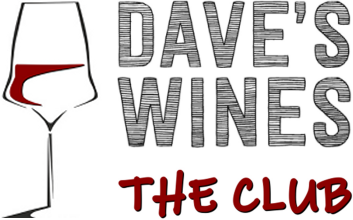





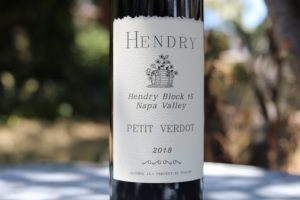

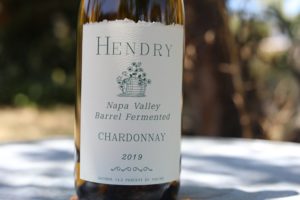
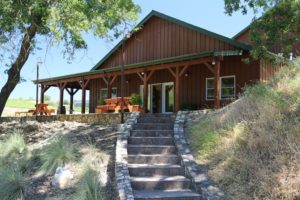

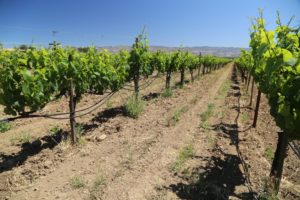

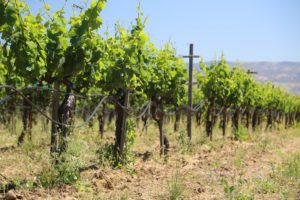

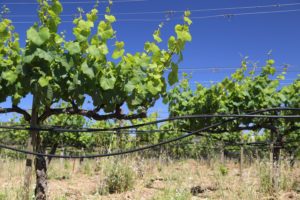
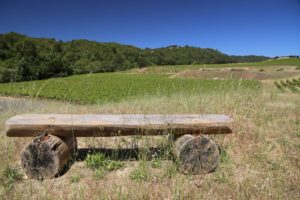
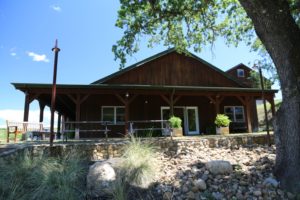
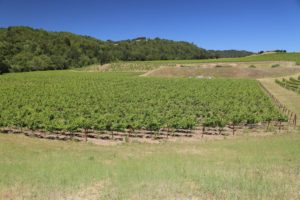

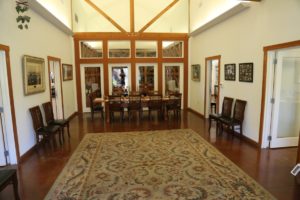
George & Mike. Just a quick reminder that you are welcome to stop by anytime to get a overhead view of all the extensive work on your new pond. Use the deck if we are not home or give us a ring & come in for a visit.
Ned – I hope you connected with Mike. Reminds me, I need to get back to Hendry Ranch 🙂